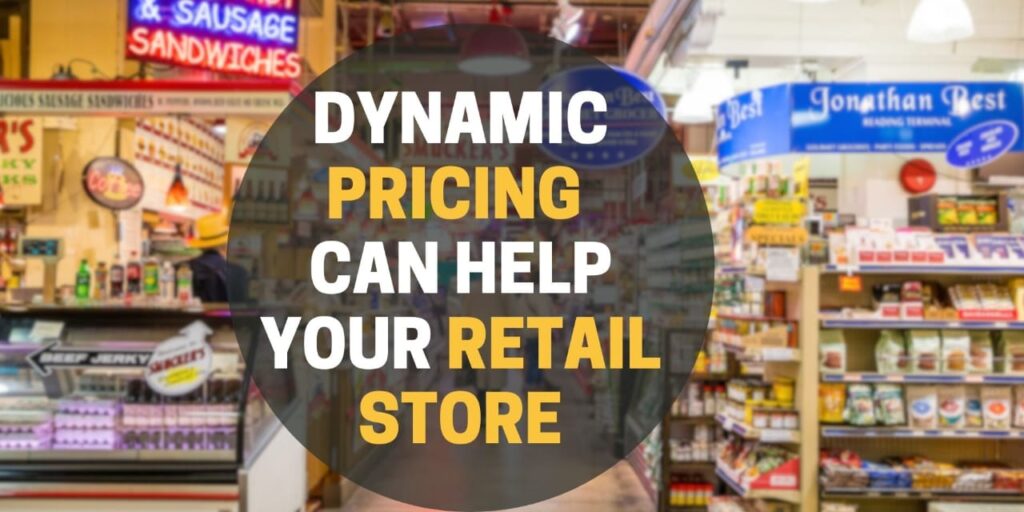Dynamic pricing, a concept which was once reserved for online retailers, is now gaining traction among brick-and-mortar stores selling wholesale products. As one can expect, these stores are seeking to optimise their pricing strategies and ante up their profitability.
Given today’s competitive retail landscape, where consumer behaviour and market conditions are getting more unpredictable by the day, it becomes all the more important to mould retail operations on customers’ whims.
The ability to adjust prices dynamically based on demand, inventory levels, and other factors can be a game-changer for retail businesses. In this blog post, we’ll explore dynamic pricing and how it can benefit your retail store.
What’s Dynamic Pricing
Also known as demand-based pricing or surge pricing, it’s a pricing strategy in which prices for products or services are adjusted in real-time. The adjustments are based on various factors such as demand, supply, competition, and customer behaviour.
Unlike traditional fixed pricing models, dynamic pricing helps you set prices dynamically, maximising revenue and profitability. For example, in the case of bulk cleaning products, you can find out which products or brands are in high demand — thus you can increase the prices to gain more.
Dynamic pricing utilises advanced algorithms and data analytics to analyse market conditions, customer preferences, and other relevant factors to determine optimal pricing strategies.
By leveraging technology and data-driven insights, retailers can set prices that are aligned with market demand, thereby maximising sales and profitability.
Benefits of Dynamic Pricing for Retail Stores:
Dynamic pricing offers several key benefits for brick-and-mortar retail stores:
Optimised Pricing: Dynamic pricing enables retailers to set prices dynamically based on real-time market conditions, ensuring that prices are always aligned with demand. This optimization helps retailers maximise revenue and profitability by capturing the full value of their products or services.
Improved Inventory Management: By adjusting prices dynamically based on inventory levels, retailers can better manage their inventory and avoid stockouts or overstock situations. Dynamic pricing allows retailers to optimise inventory turnover and minimise carrying costs, resulting in improved operational efficiency.
Enhanced Customer Experience: Dynamic pricing allows retailers to offer personalised pricing and promotions tailored to individual customer preferences. By analysing customer data and purchase history, retailers can deliver targeted discounts and incentives, enhancing the overall shopping experience and fostering customer loyalty.
Three Ways Dynamic Pricing Can Benefit Your Retail Store:
Let’s explore three specific ways in which dynamic pricing can benefit brick-and-mortar retail stores:
Product Releases
Dynamic pricing can facilitate limited-time product releases and promotions, creating a sense of urgency and exclusivity among customers. By offering special discounts or promotions for new product launches, retailers can generate excitement and drive sales.
For example, a wholesale confectionery supplier may use dynamic pricing to offer discounted pricing for a limited time on new arrivals, encouraging customers to make a purchase before prices return to normal. This strategy can help retailers boost sales and generate buzz around new product offerings.
Entertainment Events
Dynamic pricing enables retailers to tailor promotions around local entertainment events such as concerts, sports games, or festivals. By adjusting prices dynamically based on event schedules and ticket availability, retailers can capitalise on increased foot traffic and consumer spending during these events.
For instance, a retail store located near a concert venue may use dynamic pricing for wholesale food to offer special discounts or promotions to concert-goers before or after the event. Also, some stores selling tech accessories like phone chargers or power banks may benefit too.
This targeted approach can help retailers attract event attendees and drive sales during peak periods.
Weather Events:
Dynamic pricing allows you to be proactive and responsive; you must be prepared for unexpected changes in weather conditions, optimising pricing and promotions based on local weather forecasts. By adjusting prices dynamically for weather-related products or services, retailers can capitalise on changing consumer needs and preferences.
For example, a wholesale grocery store may use dynamic pricing to offer discounts on seasonal items such as ice cream, energy drink or sunscreen during hot weather spells, while increasing prices on cold-weather essentials like soup or hot cocoa during winter storms. This adaptive pricing strategy enables retailers to maximise sales and minimise waste.
Design Trends in Retail: Embracing Innovation(Opens in a new browser tab)
Implementing Dynamic Pricing in Your Retail Store
This is how you can effectively implement dynamic pricing in your retail store.
Invest in Data Analytics: Utilise data analytics tools to gather and analyse relevant data such as sales trends, customer behaviour, and market conditions. This data-driven approach will enable you to make informed pricing decisions and optimise your pricing strategies accordingly.
Leverage Technology: Implement dynamic pricing software or solutions that automate the pricing process and provide real-time insights into market dynamics. By leveraging technology, you can streamline the dynamic pricing process and ensure consistency and accuracy in pricing decisions.
Monitor Competitor Pricing: Keep a close eye on competitor pricing and market trends to stay competitive and identify opportunities for pricing optimisation on wholesale products. By monitoring competitor pricing, you can adjust your prices dynamically to remain competitive and capture market share.
